Introduction
Free and fair elections are the hallmark of a healthy democracy. Elections are important because they serve as the expression of the people’s will, allowing them to actively participate in the democratic process. The sanctity of the electoral process is crucial for the maintenance of any democratic government. Recently, the Ministry of Law and Justice in consultation with the Election Commission of India (‘ECI’) has amended Rule 93(2)(a) of the Conduct of Election Rules, 1961 (‘COE Rules’). The amended rule now restricts the issuance of such documents to those explicitly maintained under the election Rules.
These Rules have raised significant concerns regarding their ability to compromise electoral freedom, as the public will be deprived of access to CCTV recordings and various documents pertaining to the election. This is because the election regulations do not specifically outline CCTV footage as a type of document that can be sought to challenge an election. This will narrow down the scope of challenging elections under the Representation of the People Act,1951 (‘RP Act’). which can be sought to challenge an election. Moreover, this will further limit the courts since they cannot now direct ECI to provide election-related documents to the public.
Through this article, the author aims to address the concerns regarding the recent amendment to the election Rules. Firstly, the author strives to conduct a critical analysis of the amendment to the election Rules. Secondly, the author examines the constitutionality of the Rules concerning the voters’ right to information and their right to access election documents. Finally, the author provides suggestive remarks on the recent amendments, emphasising the need for electoral transparency and the protection of electoral freedom.
Critical Analysis of Recent Amendment
COE Rules lays down the detailed Rules for conducting the elections as per the RP Act, 1951. Previously, Rule 93(2)(a) provided that “all other papers relating to the election shall be open to public inspection.” This implied that the public could seek access to all documents, except those outlined in the negative list, which includes confidential documents that cannot be provided to the public at large. However, after the recent amendment, the government has added the phrase “as specified in these Rules” to Rule 93(2)(a), after which the new provision would read:
“All other papers as specified in these rules relating to the election shall be open to public inspection.” (Emphasis Supplied)
Voters have the constitutional right to information, which is traceable to Article 19(1)(a) of the Constitution. This right extends to seeking information from constitutional bodies like the ECI. This small yet significant tweak to the COE Rules can be seen as an attempt to curtail the information that a voter can obtain under the prescribed Rules. Currently, political parties can ask the ECI to provide electoral roll & voter Data, details on EVM and voter verifiable paper audit trail, expenditure limits for candidates and parties, criminal records, assets, and liabilities declared by candidates as per Rules. However, in the election process, a wide range of documents is created, which are mentioned in the election handbook and other related materials but are not specified in the Rules. The new amendment will make it impossible for the public to access these documents.
The Election Commissioner justified these regulations by stating that the new rules are meant to protect voters’ secrecy and they have potential abuse of CCTV recordings for ulterior purposes through Artificial Intelligence. However, this reasoning cannot justify withholding CCTV footage. In Raghbir Singh v. Gurcharan Singh, the SC held that voter secrecy is not a standalone principle capable of overriding the purity of elections. Where there is a larger public good involved secrecy of elections could be breached. As far as possible, both rights must function in harmony, and when a conflict arises, the principle of election purity, serving the larger public interest, must prevail. Moreover, in Arikala Narasa Reddy v. Venkataram Reddy, the court ruled that the public has the right to inspect marked electoral rolls and counterfoils, stating that voter secrecy exists only to protect voters and ensure they can vote freely.
The recent amendment poses a serious threat to free and fair elections, which form a fundamental part of the basic structure of the Constitution and should not be permitted. In Shailesh Manubhai Parmar v. Election Commission of India, the SC held that the secrecy of the ballot is a vital principle for ensuring free and fair elections. The higher principle, however, is free and fair elections and purity of elections. If secrecy becomes a source of corruption then sunlight and transparency have the capacity to remove it. Legislation promoting transparency aims to prevent corruption and ensure free and fair elections.
In the present case, withholding CCTV footage and other election-related documents under the guise of promoting voter secrecy is invalid, as it does not benefit voters in furtherance of free and fair elections. On the contrary, it curtails their freedom by denying them access to essential documents, which are crucial for ensuring transparency and accountability in the electoral process. When greater accountability is ensured through the disclosure of voter-related information, it naturally encourages voters to cast their votes freely. Voters gain confidence knowing that they can scrutinise the process and address any discrepancies, thereby reinforcing trust in the electoral system. Non-disclosure would undermine the purity of the election process and cause irreparable harm to the larger public interest. Additionally, the Rules directly violate the principle of purity of elections established by the SC in the above-mentioned cases. Therefore, the argument for protecting voter secrecy by withholding CCTV footage miserably fails to inspire public confidence.
In a country like the US, election-related misinformation has been falsely used to claim electoral fraud. However, in India, adequate penal provisions and awareness measures are in place to prevent the spread of misinformation. Moreover, no incidents similar to those in the US have occurred in India. Therefore, restricting access to election-related documents is unnecessary. Additionally, the ECI claimed that the changes would aid in preserving order in conflict-affected regions like Jammu and Kashmir (‘J&K’). But, the rationale of security issues in Jammu & Kashmir and areas affected by Naxalism cannot be uniformly applied across the nation, since the circumstances vary significantly from one state to another.
In recent times, several incidents have greatly diminished public confidence in the impartiality of the ECI. Whether concerning the appointment of Chief Election Commissioners, meetings with the Prime Minister’s principal secretary before elections, or the matter of electoral bonds, the ECI has repeatedly failed to maintain its credibility. In the Chandigarh Mayor election, presiding officers belonging to the ruling party were caught red-handed tampering with ballot papers. The Supreme Court (‘SC’) described this incident as the “murder of democracy.” Interestingly, the officer was only caught due to the CCTV footage, which recorded the entire incident. Had the footage not existed, the event would have gone unnoticed. In situations like this, the significance of making election footage available to the public cannot be overstated. At this stage, the ECI must exert all possible efforts to restore public trust, which can only be accomplished through greater transparency and less secrecy. Unfortunately, the recent amendments have merely diminished the ECI’s credibility.
Right to information Vis-à-vis right to access election documents.
Right to information (‘RTI’) is the most important facet of free and fair elections. RTI in democracy is recognised by almost every civilised nation and it is a natural right that comes from the basic principles of democracy. RTI is an essential part of the right to freedom of speech and expression under Article 19(1)(a) and merely casting a vote would be meaningless unless citizens are sufficiently informed on all sides of the issues. Moreover, in State of U.P. v. Raj Narain , the state refused to provide an election document to the respondent by claiming privilege. The Constitutional Bench of the Supreme Court, by tracing the right to information to Article 19(1)(a), held that the impartial administration of justice in the public interest can only be ensured through the disclosure of material and relevant documents.
The ECI’s argument to restrict information to maintain secrecy is unfounded, as the SC while dealing with the contention of right to secrecy in S.P. Gupta v. Union of India held that public scrutiny is crucial for ensuring clean and healthy administration. The Court further held that the area of secrecy must be minimized to balance it with public interest, emphasizing that disclosure of information is itself an important aspect of public interest. Therefore, withholding CCTV footage under the garb of voter secrecy infringes the RTI and the right to make an informed choice, and is thus impermissible.
At this juncture, it would be useful to analyse the Representation of the People (Third Amendment) Act, 2002, which contained a similar provision under Section 33-B, albeit in a slightly different context, as compared to the current amendments to the COE Rules. The said section stipulated that candidates are not required to disclose any other information (other than information required by the Act and the Rules). Through this enactment, candidates were not required to disclose any information that was not explicitly mandated by the Act. This provision was challenged before the SC in PUCL v. Union of India (2003), where it was declared unconstitutional. The Court held that the provision imposed a blanket ban, consequently undermining the right to information, which is an essential aspect of the freedom of speech and expression and a necessary condition for free and fair elections. In this judgement, the SC recognized the right of voters to know the criminal antecedents of election candidates. Similarly, the recent amendment to Rule 93(2)(a) of the COE Rules imposes a blanket ban on accessing election documents by restricting access to only those documents specified in the rules, along with CCTV footage related to elections. The amendment, as such, can be invalidated on the same ground as infringing on the right to information of the voters.
Moreover, in the Electoral Bond case, the SC laid down the proportionality test to determine the justification for the violation of the right to information. It requires a measure to have a legitimate goal, suitable means, the least restrictive approach, and no disproportionate impact on fundamental rights. Nevertheless, the existing Rules seem to have a legitimate goal of safeguarding voter privacy and hindering the dissemination of false information. However, completely stopping the free flow of information is not the least restrictive approach. Less harsh alternatives, like providing information solely to those impacted or limiting access only in sensitive regions like J&K, could be contemplated. Moreover, the Rules have a disproportionate impact on voter rights by violating the voters’ right to information through the non-disclosure of crucial documents in the garb of voter secrecy. As a result, the Rules fail to pass the test of proportionality.
The recent amendments brought through subordinate legislation are manifestly arbitrary as they fail to use reasonable means to protect voter secrecy and unreasonably and arbitrarily restrict the flow of voters’ right to information by imposing a blanket ban. The doctrine of manifest arbitrariness serves as a check against State Actions or legislation that are capricious, irrational and unreasonable. The SC defined “arbitrary” as being done unreasonably, capriciously or at pleasure, irrational, unreasonable, or not grounded like things. The arbitrariness of legislation is a facet of unreasonableness in Articles 19(2) to (6). The new Rules fail the test of constitutionality for being manifestly arbitrary, as they restrict voters’ access to information in an irrational and sweeping manner without providing a valid justification for such an action.
Conclusion And Way Forward
At a time when the ECI is facing an unprecedented credibility crisis, the only effective check and balance available to the public is the right to access information. The current amendment imposes excessive and unjustified restrictions on accessing election-related information, undermining both the right to information and the purity of the electoral process. This move undermines electoral freedom, which is quintessential for the functioning of any healthy democracy. Such incidents have led to a decline in India’s international reputation, as the country is increasingly criticised for constraining electoral freedom, RTI and civil liberty. This is evident from India’s consistently poor rankings in global reports on electoral freedom, where it has been described as an “electoral autocracy.”
It is a trite saying that “sunlight is the best disinfectant.” The more information is concealed, the greater the suspicion it generates about the intentions behind such concealment. The ball is now in the court of the SC, as the validity of the amendment has been challenged before it. It is anticipated that the SC will declare the amendment unconstitutional as it is arbitrary, excessively restrictive, and has a chilling effect on electoral freedom, and once again step in to protect electoral integrity in an era where such freedoms are under great threat.
Sharnam is a Second Year Student at The National Law Institute University, Bhopal

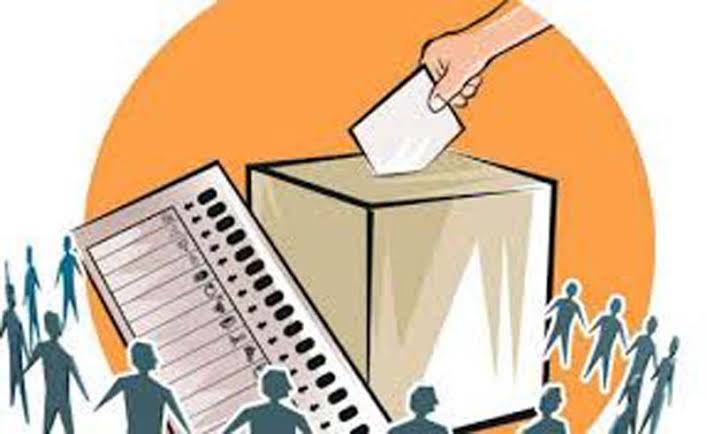
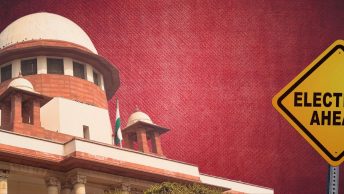
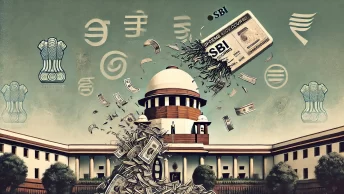
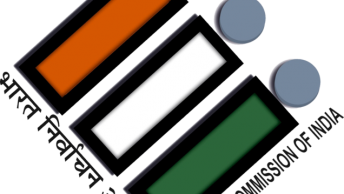
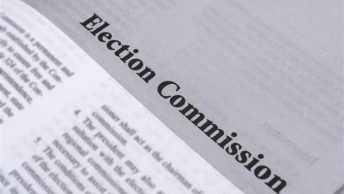

dz2BSaAwBFn
you are in reality a just right webmaster The site loading velocity is incredible It seems that you are doing any unique trick In addition The contents are masterwork you have performed a wonderful task on this topic